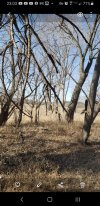I second this. Licking branches are not always accompanied by a scrape, AND the research has shown the licking branches being used throughout the year even when the scrape has gone dry and is not being actively hit. Most the recent research seems to point to the licking branch being of greater importance.
The other thing about this entire conversation is the comparisons that keep going back to our sense of smell. Our sense of smell versus a deer’s is quite simply incomparable. I’ve heard it explained like this before with dogs: you open a box of crackers and you smell crackers but that dog smells the ingredient list. The dog smells wheat flour and vegetable oils and rice starch and salt and sugar and spices and everything else that went into that cracker. Humans have about 5 million olfactory receptors to process smell, and a dog may have 220 million—but a deer has almost 300 million. So even though you’re out there snorting licking branches and scratch and sniffing scrape dirt, you have no understanding of what a deer is picking up from any of those sites or how far they can smell them.
Back to the OP’s original question, YES, the type of dirt matters just as the type of tree for licking branches shows preference in certain areas. Good Beyond The Echo podcast recently with Troy Pottenger who has lived and died by scrapes for decades. He talks very specifically about studying preferential soil types and tree species in a given area. Search some podcasts with his name and you’ll likely get a ton of info on this. There was also a really good NDA podcast last summer with a biologist named Miranda Huang that was a deep dive into the science of scrapes. Also worth a listen.
Sent from my iPhone using Tapatalk


